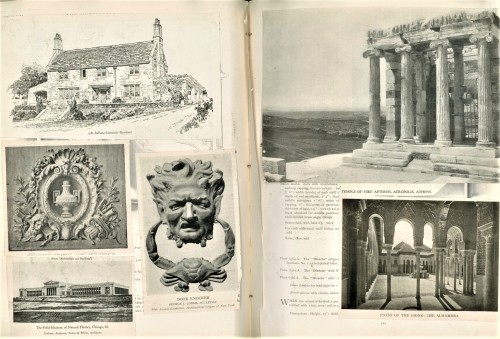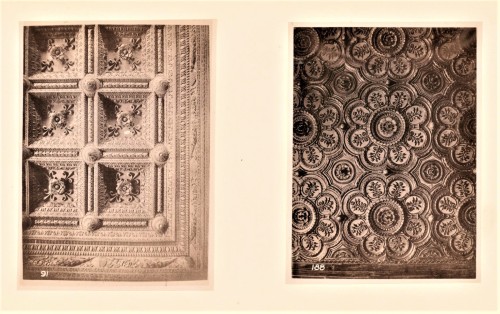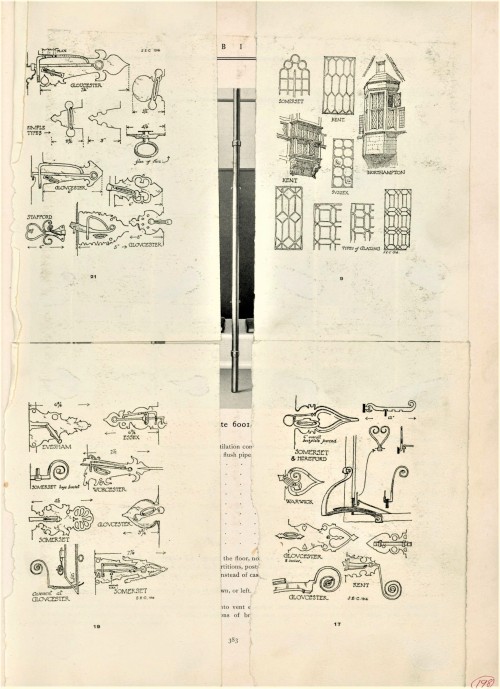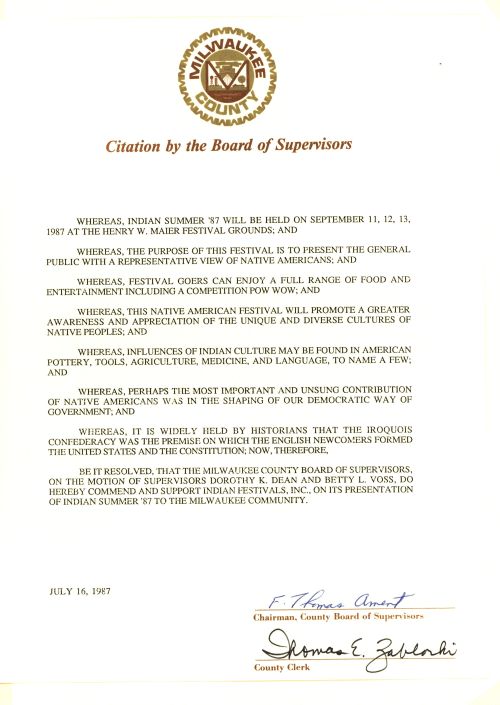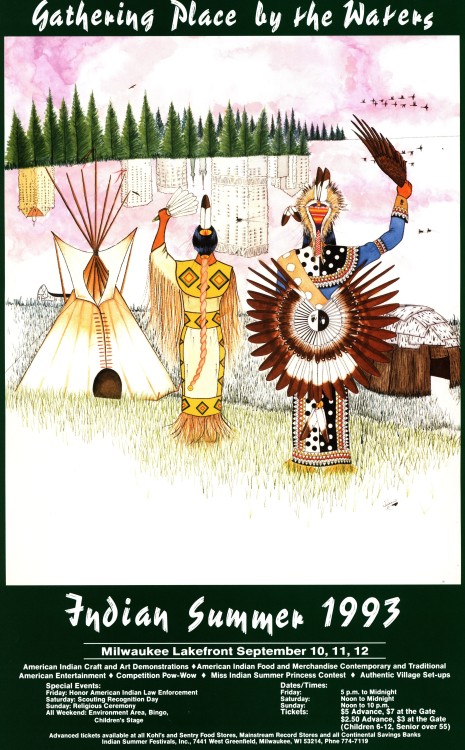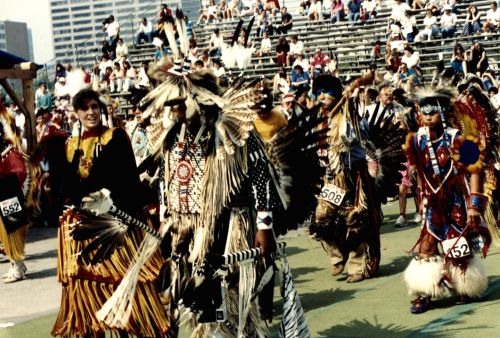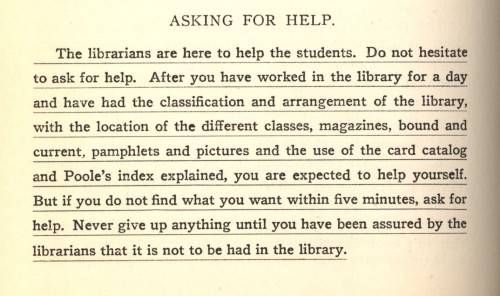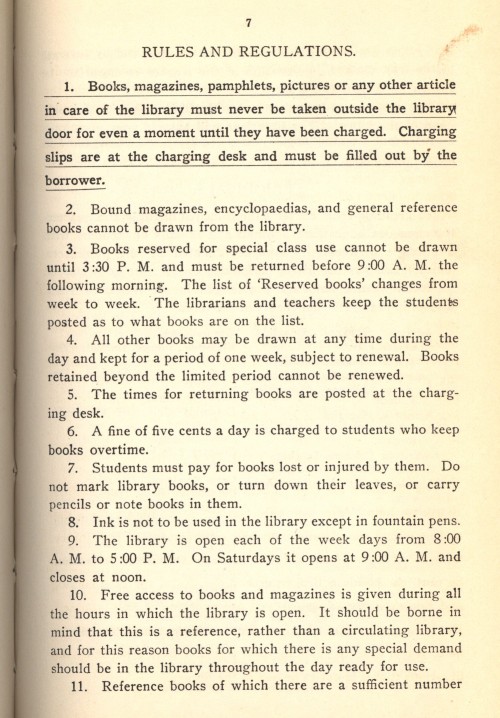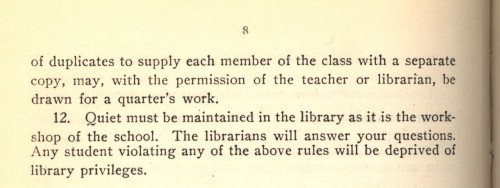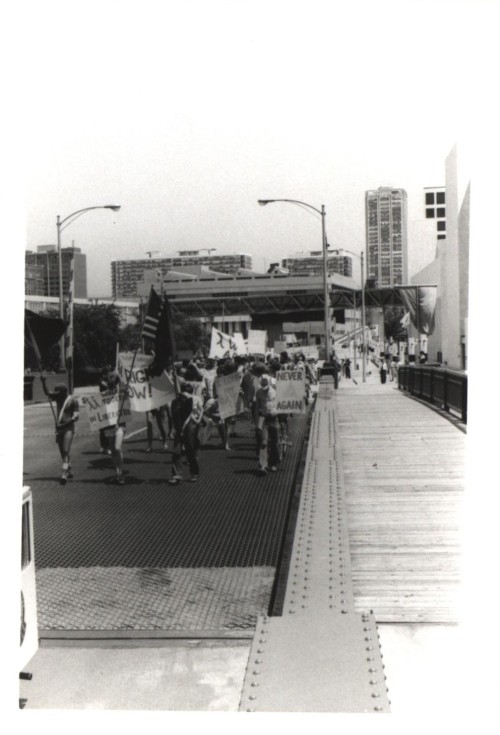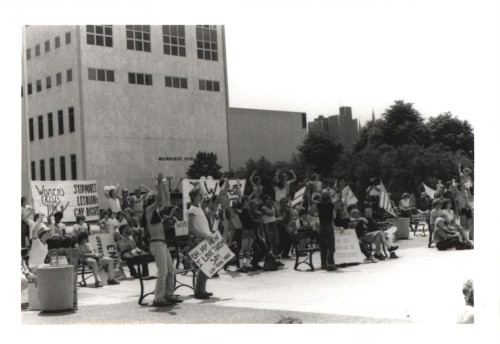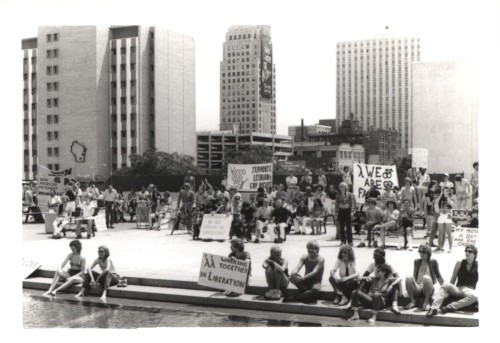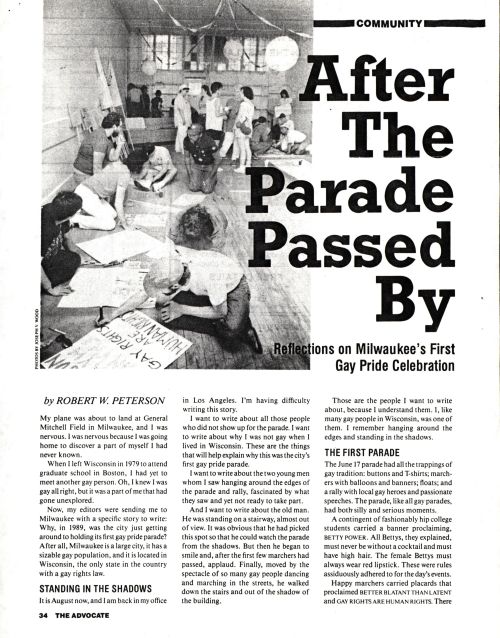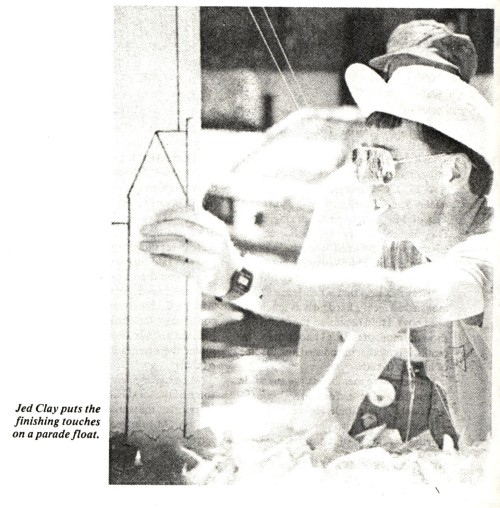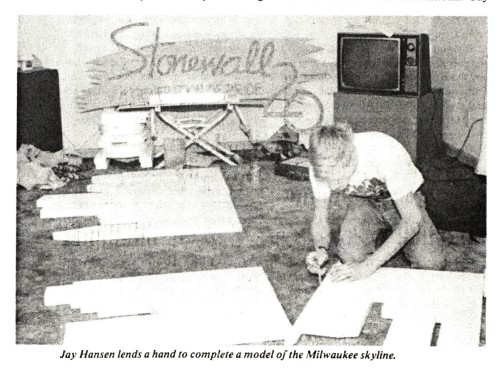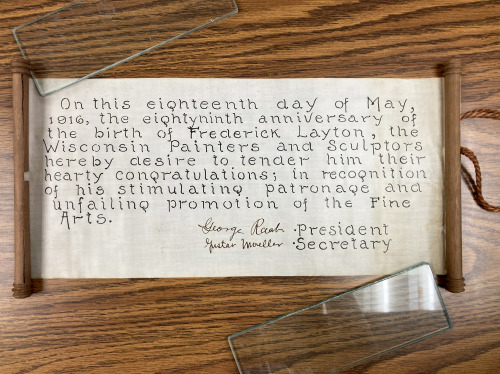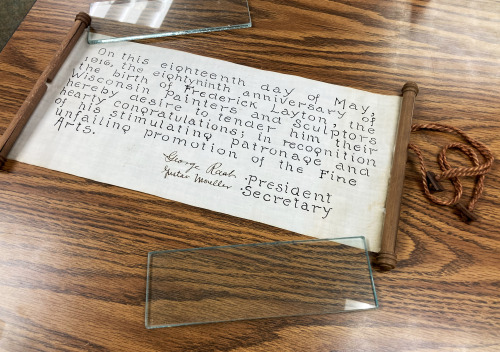#milwaukee history
Eschweiler Scrapbooks
While seeking out Decorative Sunday material this week, I came across several sets of scrapbooks from the prolific Milwaukee architectural firmEschweiler & Eschweiler. Some of the scrapbooks contain architectural postcards organized by theme (such as “details,” exemplified in images 2-4 from volume one of the six volume [Scrapbooks Containing Architectural Postcards]. Others contain a more random assortment of magazine clippings, postcards, and photographs, pasted into old catalogs of Thomas Maddock’s Sons Company of New Jersey and plumbing hardware from the J. L. Mott Iron Works company in New York (volumes one and two of Scrapbook of architectural photographs). While there are no clues to suggest who was responsible for assembling the scrapbooks, it’s possible they date to between 1966 and 1974, when the firm was known as Eschweiler, Schneider & Associates. See image captions for detailed descriptions.
Founded in 1892 by Alexander Eschweiler, later helmed by Alexander’s three sons, the firm had over 1,100 commissions in Milwaukee and beyond until the firm’s closing in 1975. The Eschweiler firm was known for their grounding in traditional style. Comparing Eschweiler with his more internationally famous contemporary Frank Lloyd Wright, the late UWM Architecture professor Douglas Ryhn purported that “there is no similarity in styles but it looks like they were inspired by the same feelings. Wright individualized, personalized architectural expression. Eschweiler took this integrity and used it with images that had already proven themselves.”
While many buildings from the firm have been demolished, there are over 80 extant buildings, including several of the luxurious East Side residences along Bradford Avenue, Newberry Boulevard, and Lake Drive, as well as the Milwaukee-Downer Quad (Holton, Merrill, Johnston and Greene Halls) on UWM’s campus (which command a large portion of the view from Special Collections). Other notable Eschweiler & Eschweiler buildings include the Wisconsin Gas Building, the Wisconsin Telephone Company, and Plymouth Church.
ViewmoreDecorative Sunday posts here.
Findmore posts focused on architecturehere.
-Olivia, Special Collections Graduate Intern
Post link
Milwaukee’s Indian Summer Festival (Part 2)
Indian Summer is noted as the “largest Native American gathering of its kind in the country” (https://www.indiansummer.org/). In our prior post, we noted that Milwaukee had its inaugural festival in September 1987. The pictured posters are from subsequent years of the festival and are included in the publicity materials within the collection (UWM Mss 250) along with materials that reference Education Day and the annual Winter Pow Wow at the Wisconsin State Fair Park.
Milwaukee’s Indian Summer Festival is on-going and continues to be an event that is significant in educating and engaging the public with the history and culture of Milwaukee’s indigenous communities. As always, we acknowledge in Milwaukee that we are on traditional Potawatomi, Ho-Chunk and Menominee homeland along the southwest shores of Michigami, North America’s largest system of freshwater lakes, where the Milwaukee, Menominee and Kinnickinnic rivers meet and the people of Wisconsin’s sovereign Anishinaabe, Ho-Chunk, Menominee, Oneida and Mohican nations remain present.
Post link
Milwaukee’s Indian Summer Festival (Part 1)
In September 1987, Milwaukee introduced its newest ethnic festival, Indian Summer. It included food, handcrafts, cultural displays, stage performances, competition pow-wow, a children’s area and more. The purpose of such a festival was to present the general public with a representative image of native peoples nationwide.
Per the organizers:
“We feel that the positive images received by the people attending a Native American festival would create a greater understanding and awareness of the unique and diverse cultures of Native Americans. This festival is being created for Indians and Non-Indians to share and enjoy the talent and excitement of the Native American Indian.”
The records for Indian Summer at UWM Archives (UWM Mss 250) range from 1985-2007 and includes administrative records, publicity materials, and photographs. The brochure and photographs in this post are from the inaugural festival on September 11, 12, 13 (Box 2, Folders 24 and 26).
Post link
How To Use the Library
As UWM Libraries prepare to open to the public on August 1, here’s a reminder about how to use the library.
This delightful guide from Milwaukee Normal School can be found at the UWM Archives in our reading room, call number LD6156 .A15 1908-1912.
Post link
1980 Milwaukee Pride March
The black and white photographs above showcase the 1980 Pride March here in Milwaukee. If you look closely, you can recognize signage from local LGBTQ+ organizations like the Gay Peoples Union as well as downtown Milwaukee landmarks such as the State Street bridge and the Wisconsin District State Office Building.
These photographs were taken to be used in the LGBTQ+ news-magazine Milwaukee Calendar, later called Gay Milwaukee, which ran from 1978-1981. Milwaukee Calendar featured a calendar of local events and bar specials, brief news articles, and a handful of photographs from local events in their biweekly issues. You can view more photographs here at the UWM Archives, and you can find complete issues of Milwaukee CalendarandGay Milwaukee in our sibling department, @uwmspeccoll
These black and white photographs can all be found in box 1 of the Milwaukee Calendar Photographs, call number UWM Mss 312, at the UWM Archives.
Post link
Celebrating Juneteenth Day: Milwaukee’s 50th Anniversary
On June 19, 1865, two-and-a-half years after President Abraham Lincoln signed the Emancipation Proclamation, enslaved Black Americans in Galveston, Texas, finally received the news about the end of the Civil War and their newly “freed” status. Known as Juneteenth (”June” plus “nineteenth”), the day commemorates the end of slavery in the United States.
Official celebrations of Juneteenth began as early as 1866 in Southern cities and spread to other parts of the United States in the 1900s. For many years, Black Milwaukeeans held neighborhood block parties to celebrate Juneteenth, but in 1971, Milwaukee became one of the first northern cities to officially host celebrations to commemorate emancipation with their inaugural Juneteenth Day Festival. Today, June 19, 2021, marks 50 years of Milwaukee’s celebration of the day.
This short clip from WTMJ-TV shows footage of the parade, food, and booths during the Juneteenth Day celebration in 1975.
More footage of Milwaukee’s Juneteenth Day celebrations from 1974-1979 is available online through the WTMJ-TV News Search, accessible through the UWM Archiveshomepage.
June is Pride Month!
While early LGBTQ+ Pride celebrations, protests, and marches were held in Milwaukee, WI as early as 1971, Milwaukee’s first Pride parade happened on June 17th, 1989. This article comes from a 1989 issue of The Advocate, a prominent LGBTQ magazine that began in Los Angeles, CA in 1967 and continues to represent an important public voice for the LGBTQ+ community today. The excerpt and photographs shown above highlight the preparation that went into Milwaukee’s first Pride parade and the importance it held for members of Milwaukee’s LGBTQ+ community.
The full copy of “After the Parade Passed By” featured here can be found in the Miriam Ben-Shalom Papers, call number UWM Mss 237, here at the UWM Archives.
Post link
Charlotte Russell Partridge and Miriam Frink Papers
ThePartridge and Frink Papers (Milw Mss 167) are full of interesting photographs related to the Layton School of Art, the Layton Art Gallery, and Partridge and Frink’s own work. Included in the collection (box 75) are two particularly unique artifacts: a small metal object consisting of an interconnected “C” and “M” for Charlotte and Miriam and a scroll commemorating the birth of Frederick Layton, on this day in 1827, both pictured above.
More information about Partridge and Frink can be found by searching the rest of our blog or by visiting the UWM Archives to see their papers in person. The Archives also holds the records for the Layton School of Art (Milw Mss 168) and the Charlotte Russell Partridge Collected Papers (Milw Mss ED) for further information on the history of art in Milwaukee.
Post link

